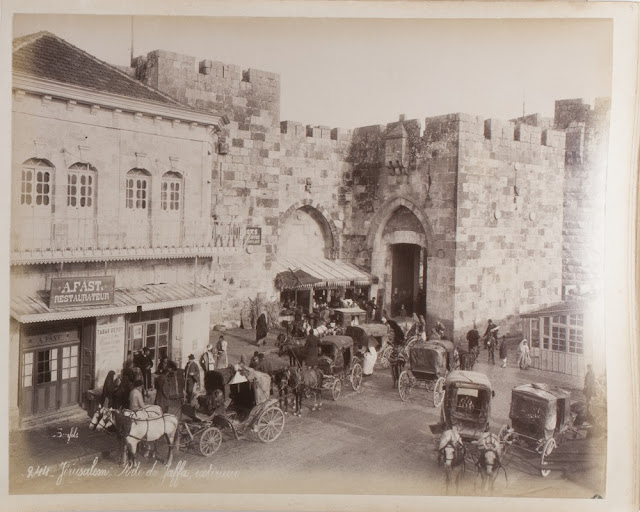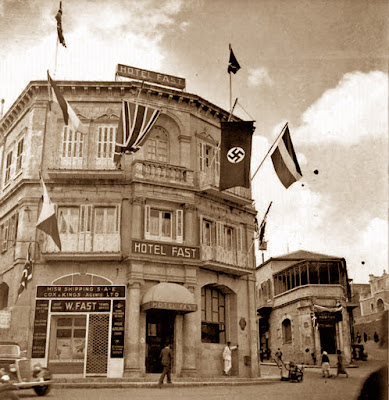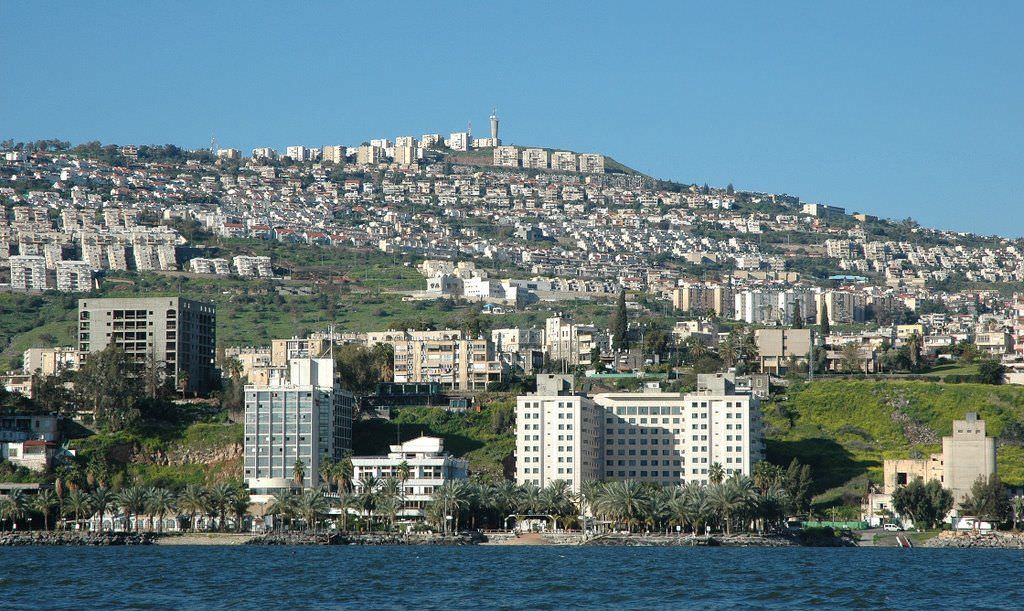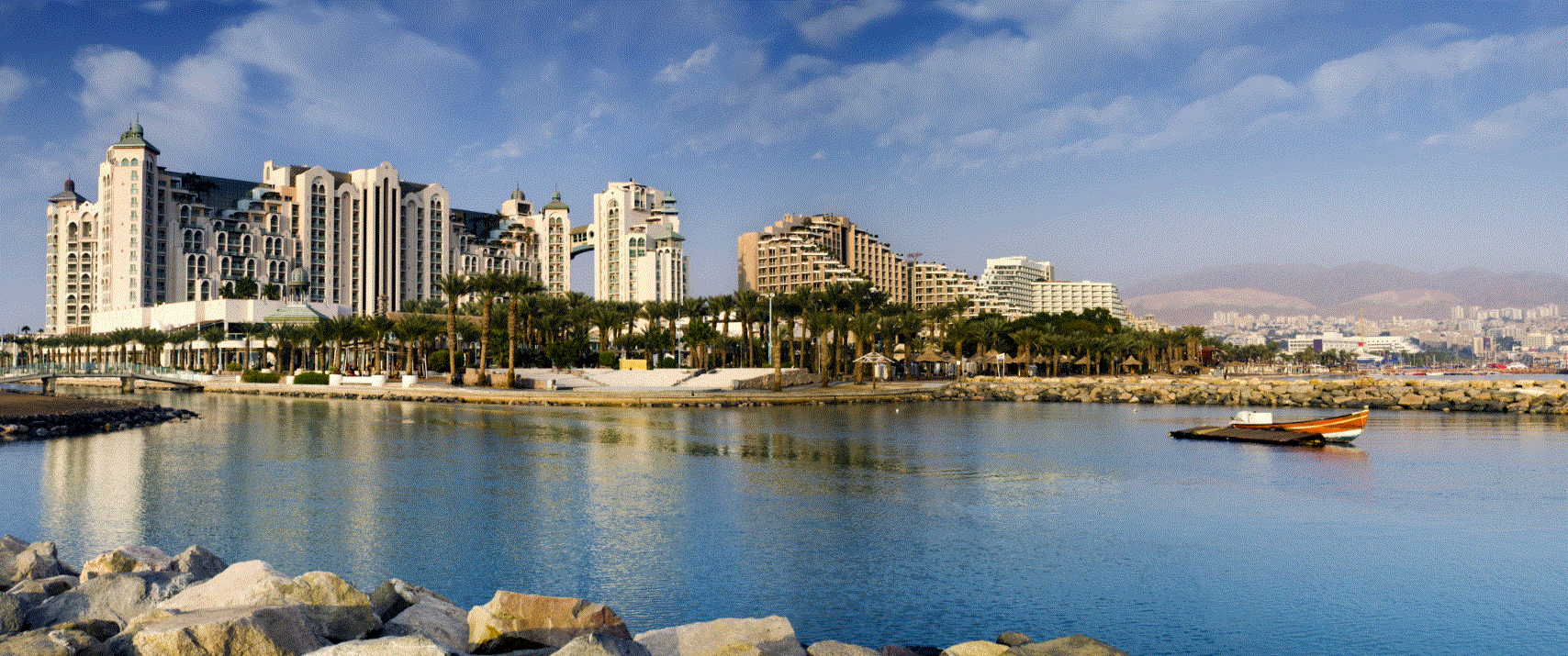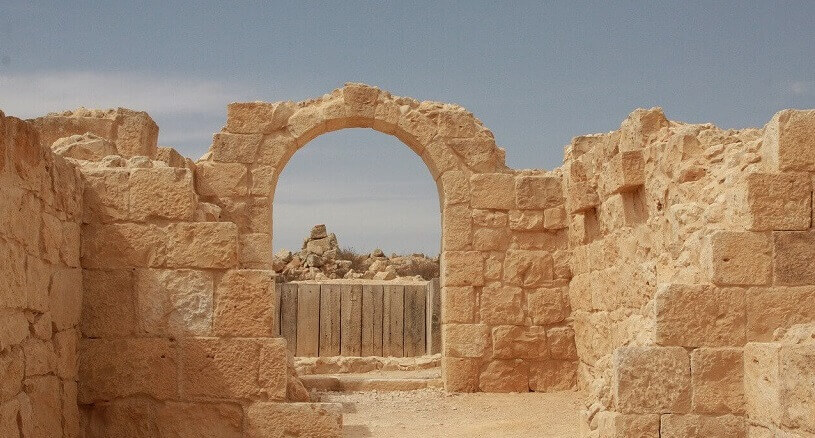It was replaced by The Jerusalem Pearl Hotel in 1995 by the Draiman family. See picture at the bottom.
Posted: 30 Aug 2015 11:11 AM PDT
We recently published pictures from the British Library's Endangered Archives Program, including this incredible picture of Jaffa Gate of Jerusalem's Old City which we have dated to the mid-1890s. Only in 1898 was the wall near Jaffa Gate breached so that carriages could drive into the city.
|
Jaffa Gate and A(braham) Fast's restaurant. (Debbas Collection, British Library) |
We wanted to know more about the store on the left with the sign "A Fast. Restauranteur." Was this a tourist establishment of Abraham Fast, who in 1907 took over a large hotel several hundred meters to the west of the building pictured above and renamed it "Hotel Fast?"
|
German troops marching in Jerusalem on Good Friday,
April 6, 1917. The building on the left is |
|
It was a leading hotel with 100 rooms, built around a court yard with Ionic, Corinthian and Doric columns.
Hotel Fast and its kosher restaurant was a well-known establishment in Jerusalem for decades, and was probably considered by many to be a Jewish-owned establishment because of its Jewish clientele.
Nothing could be further from the truth. The Fasts were German Templers.
|
|
|
|
|
|
|
They lived in Jerusalem's German Colony and were exiled by the British after World War I and during World War II because of their support for Germany.
We recently uncovered pictures of German troops marching in Jerusalem streets on Good Friday 1917. Readers were able to identify the building on the left as the Fast Hotel.
Our biggest surprise was finding this picture of the German consulate in the Hotel Fast with the German Swastika flag flying from the building.
During World War II, the hotel was taken over by the British army command and turned into the Australian army club.
|
|
The Hotel Fast building was abandoned in 1967 and torn down in 1976 to make way for the Dan Pearl Hotel - Built by the Draiman family in 1995.






